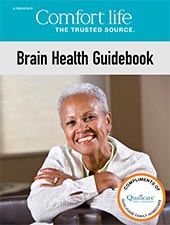Heart Attack and Stroke: Seven Ways to Lower Your Risk

Genetics accounts for only 10 to 25% of any disease. So even if you have a family history of hypertension, heart disease or stroke, you can lower your risk by choosing to live a healthier lifestyle.
Risk factors common to hypertension, heart disease and stroke:
- Smoking. If you smoke, you need to quit now. Those who quit see a significant decrease in the risk of having a heart attack or stroke within the first year of quitting.
- Inactivity.
- Abdominal obesity. Waist measurements (from right over the navel) larger than 31 inches for women and 35 inches for men put you at higher risk.
- A poor diet that includes red meat, organ meat, salty foods, fatty and fried foods and lard.
- Diabetes.
- Negative stress.
- Alcohol. 30 or more drinks within a month put you at increased risk.

Seven lifestyle changes to control your risk:
If you do or have any one of the risks listed above, you must make a change now before it’s too late. You can control your risk of hypertension, preventing stroke or heart attack, by making the following seven lifestyle changes.
1. Be active
Vigorous walking 30 minutes a day is the easiest way to start. However, doing strength training 3 times a week (to maintain your lean muscle mass and keep your waist-to-hip ratio in a healthy range) is one of the best solutions to reducing your risk of heart attack or stroke.
2. Lose weight.
A loss of 10 lbs will lower blood pressure. Healthy weight could bring your blood pressure into normal range.
3. Eat a whole food diet.
Vegetables and fish are especially important. Avoiding processed foods (that contain bad fats, sugar and salt) are a must. To lower your blood pressure, stop drinking sugary drinks.
4. Eat more good fats.
Extra virgin olive oil, fatty fish like salmon and trout, coconut oil plus nuts and seeds such as walnuts and sunflower seeds, are all great choices.
5. Stop smoking.
6. Reduce alcohol intake to just 1 or 2 drinks (or less) a day.
7. Manage your stress. Deal with any negative stress in your life by taking action now. Practice a relaxation technique like deep breathing, meditation or yoga every day.
COMING UP: Next week’s blog will continue with Part 5 of 5: In Pursuit of Good Health – Osteoporosis and how you can lower your risk to lead you to a healthy, active life.
****
Related links:
Dr. Amy: Health and wellness for caregivers
Inexpensive ways for seniors to exercise
Seven ways grieving affects your health
Exercise your brain to keep young
Exercise your sense of balance to prevent falls


